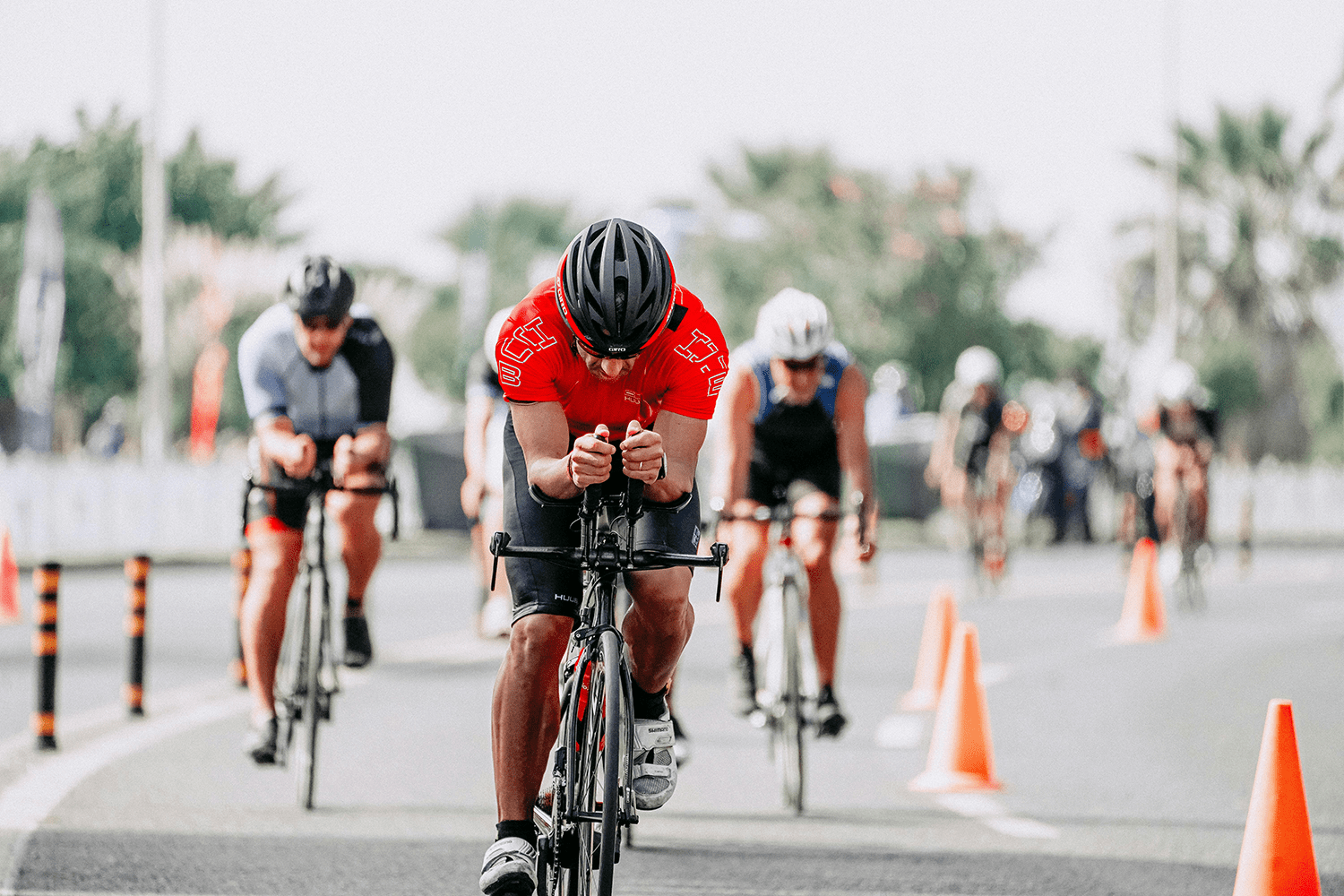Triathlon is a demanding multidisciplinary sport that combines swimming, cycling, and running. Not only do triathletes have to train intensely, but they also know how essential it is to focus on recovery to maintain their peak performance. Among the various recovery techniques, ice baths stand out for their numerous benefits. But how can ice baths help triathletes improve their performance and reduce the risk of injury?
What is an Ice Bath?
An ice bath involves immersing oneself in cold water, usually between 3°C and 15°C, for a period of 3 to 20 minutes. This technique, while not very pleasant, is increasingly popular among athletes for its beneficial effects on the body. The main objective of ice baths is to subject the body to thermal stress, which may promote faster recovery and allow for a quicker return to training.
Why Do Triathletes Take Ice Baths?
1. Reduces Muscle Soreness and Inflammation: After intense training or competition, muscles experience micro-tears, leading to pain and inflammation. Ice baths help reduce this inflammation by causing vasoconstriction, which decreases blood flow to the muscles. This limits muscle soreness and allows for faster recovery.
2. Accelerated Recovery Process: After an ice bath, the body warms up, causing blood vessels to dilate. This reaction improves blood circulation, allowing nutrients and oxygen to reach tired muscles more quickly, contributing to efficient recovery. This improved circulation contributes to faster recovery, allowing triathletes to train more efficiently and more frequently.
3. Injury Prevention : Exposure to cold can strengthen muscles and joints, which helps prevent injuries. By reducing inflammation and promoting better circulation, ice baths help triathletes maintain body integrity, especially during periods of intense training. This helps reduce the risk of musculoskeletal injuries common in this demanding sport.
4. Improved Performance: Studies have shown that athletes who regularly use ice baths often show improved performance in their subsequent sessions. This is due to faster recovery and more effective pain management. Triathletes who engage in this practice find they can increase their training load without compromising their performance.
5. Positive Psychological Effects: Overcoming the discomfort of ice baths can help triathletes develop greater mental resilience. This experience can strengthen their ability to manage stress and stay focused during competitions, essential qualities for success in a demanding sport.
6. Strengthens the Immune System: Ice baths can have a positive effect on the immune system. Regular exposure to cold can stimulate the production of white blood cells, strengthening the body's ability to fight infections and diseases.
When Should Triathletes Take an Ice Bath?
1. After an Intense Workout : One of the best times to take an ice bath is immediately after an intense workout, whether it's a long run, a swim, or a challenging bike ride. The goal is to reduce inflammation and relieve muscle soreness before it sets in . Ideally, it's recommended to take an ice bath within 30 to 60 minutes of exercise.
2. After a Competition : Triathlon competitions can be taxing on the body, and ice baths are especially beneficial after a race. Whether after getting out of the water, after the bike leg, or after the run, taking an ice bath can help reduce soreness and promote faster recovery. This allows triathletes to more effectively prepare for upcoming competitions or training sessions.
3. During Training Load Periods : During training load periods, when triathletes increase the intensity and volume of their training, ice baths can be incorporated regularly into their routine. This can include ice bath sessions several times a week to help manage accumulated fatigue and prevent injuries. Typically, 1 to 3 ice baths per week are enough to experience the positive effects.
4. Before a Big Competition : Some people choose to take an ice bath the day before a big competition to prepare themselves mentally and physically. This can help reduce pre-competition anxiety while ensuring that muscles are well recovered. However, it's important to ensure the experience remains positive and doesn't become an additional stressor.
5. When the Body Signals the Need for Recovery : Listening to your body is crucial. If a triathlete experiences excessive fatigue, persistent muscle soreness, or signs of inflammation, it's wise to consider an ice bath. This method can serve as a preventative strategy to avoid injury or chronic fatigue.
Ice Baths vs. Hot Baths: Which is Better for Triathletes?
Recovery is a key component of training for triathletes, and choosing between an ice bath or a hot bath can make a big difference in this process. Each has specific benefits, but knowing when to opt for one or the other is key to maximizing results and improving performance.
- Ice Bath : After an intense workout or competition to reduce inflammation, muscle soreness and speed up recovery.
- Hot Bath : After a lighter session or to promote muscle relaxation, relieve tension and improve general well-being.
The Ice Bath: The Essential Asset for Triathletes
Plunging into an ice bath after an intense workout may seem like a challenge, but the recovery benefits make it a must-do for triathletes. By reducing inflammation and facilitating muscle recovery, ice baths help you return to peak performance faster.Discover Rocean cold baths , innovative solutions combining efficiency and design, specially designed to meet the needs of athletes. With Rocean, each recovery phase is optimized thanks to efficient and elegant cold therapy.




